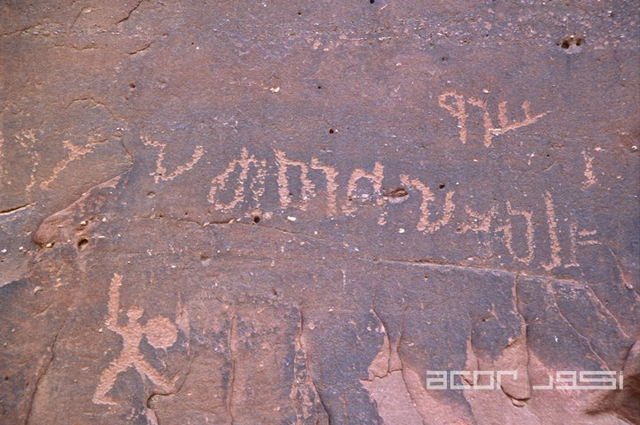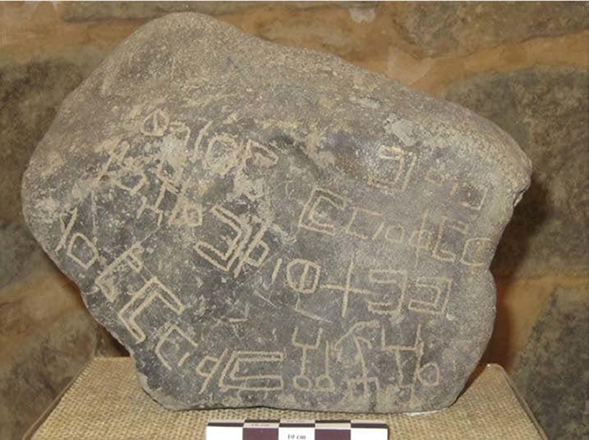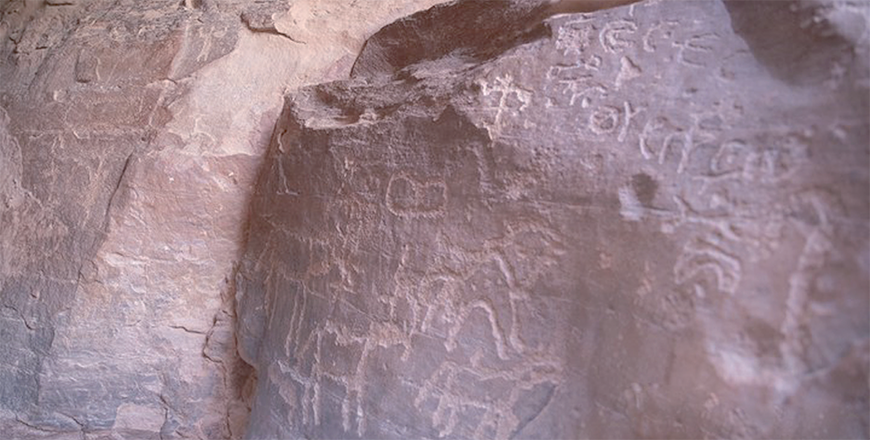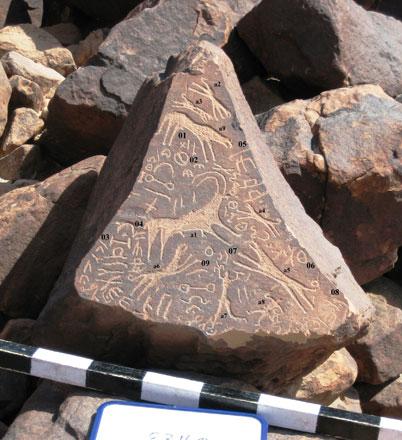You are here
OCIANA: ancient North Arabian inscriptions gathered in online corpus
By Saeb Rawashdeh - Mar 23,2024 - Last updated at Mar 23,2024

Rock drawings and Nabataean inscription in Wadi Rum (Photo courtesy of ACOR)
AMMAN — In order to have centralised information about inscriptions from Ancient North Arabia, a group of scholars created “The Online Corpus of the Inscriptions of Ancient North Arabia” (OCIANA). The fully searchable online database of the texts and translations of the inscriptions of the North Arabia with metadata and photograph is made available online, with the exception of Thamudic that has to be included in the second phase of the project.
OCIANA aims to make available in one place an edition of all known inscriptions from ancient North Arabia, noted Michael MacDonald, a British researcher who has studied the region since 1967.
“The term ‘ancient North Arabia’ in this context refers geographically to the Arabian Peninsula north of Yemen, with a fluid northern border including modern Jordan, southern Syria and western Iraq,” Macdonald said, adding that chronologically, it refers to inscriptions in all languages and scripts from this area before the Islamic era.
The vast majority of the inscriptions in OCIANA are, and will continue to be, in the Ancient North Arabian [ANA] scripts, it will also contain the texts in Akkadian, Old Aramaic, Imperial Aramaic, local forms of the Aramaic script, Nabataean, Palmyrene, Greek and Latin that have been found in Arabia, north of Yemen, noted Macdonald, adding that the ANA scripts are varieties of the “South Semitic script-family”, which is separated from the North-West Semitic (Phoenico-Aramaic) branch shortly after the invention of the alphabet, and developed in parallel to it.
“In antiquity, it was used solely in Arabia and its immediate surroundings, and its only modern survivor is the vocalised alphabet used in Ethiopia for Geʿez, Amharic and other languages,” Macdonald said, noting that in antiquity, one form of the South Semitic script-family was used in southern Arabia — the musnad, or Ancient South Arabian [ASA] “monumental” script, from at least the 10th century BC.
From this then developed the zabūr, a form of the script used to carve everyday documents on the stems of palm-leaves or on sticks while in the east of Arabia, between the Saudi Arabian oasis of Al Ḥasā and the Oman Peninsula, the ASA script was used to express what may be a North Arabian language, “Hasaitic”, alongside Aramaic.
However, in the western two-thirds of Arabia, north of Yemen, a number of different alphabets developed from the South Semitic script-family and these were used by the inhabitants of oases in north-west Arabia, Macdonald said, adding that a number of different scripts of the same family were also used very widely among the nomads from southern Syria to Yemen, who were literate at different times in different areas during the second half of the first millennium BC and the 4th century AD.
“By far the most numerous of these graffiti by nomads are the ‘Safaitic inscriptions’, which are found in their tens of thousands on the rocks of the deserts in southern Syria, the Black Desert in Jordan, and northern Saudi Arabia. Almost certainly, more people in North Arabia were literate during this period than in any other part of the Middle East, and they have left us vast numbers of inscriptions,” Macdonald concluded.
Related Articles
AMMAN — The Safaitic script belongs to the group of South Semitic scripts and was used by Arabs in southern Syria, northern Jordan and the a
AMMAN — Travelling to the Middle East for the first time in March 1967, the British scholar Michael Macdonald spent five months with a rucks
AMMAN — Ancient texts and inscriptions are among archaeologists’ most valuable finds, offering direct insights into the remains where they a

















